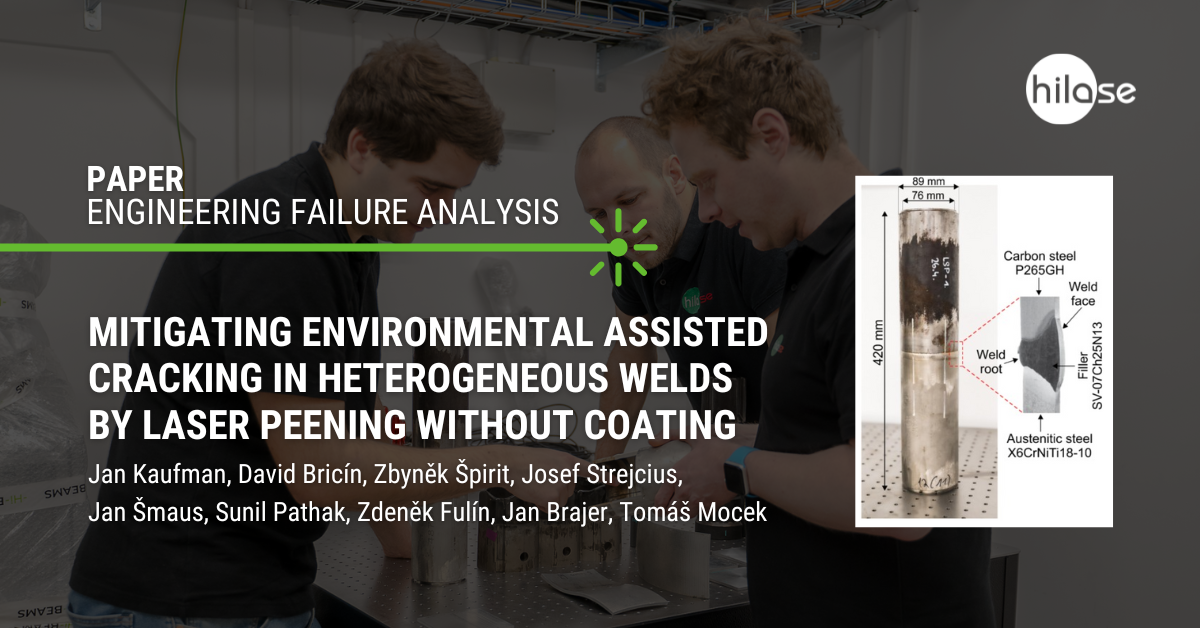The Laser Shock Peening (LSP) team of the HiLASE Centre extended the lifespan of a steel tube with a heterogenous weld from the secondary circuit of a nuclear power plant. The treatment was applied underwater using a special laser head, in order to access the hard-to-reach inside of the narrow tube. The study describes a practical solution for treating hard-to-reach areas and is beneficial in the area of using LSP on heterogeneous welds.

- The treatment introduced compressive residual stresses up to a depth of 0.8 mm.
- The lifetime of environmentally assisted cracking was extended 2.5x. There was also a reduction in secondary crack abundance and length.
- The fatigue life of the part was extended more than 8x.
HiLASIANS Jan Kaufman (team leader of LSP), Jan Šmaus (LSP technologist), Sunil Pathak (LSP scientist), Jan Brajer (head of Industrial Laser Applications) and Tomáš Mocek (head of the HiLASE Centre) collaborated with a team from the Řež research centre: David Bricín, Zbyněk Špirit, Josef Strejcius and Zdeněk Fulín.
In this work Laser Peening without Coating (LPwC) was applied underwater on heterogeneous weld joint made of P265GH and X6CrNiTi18-10 steel tubes to prevent Environmental Assisted Cracking on the weld/P265GH steel fusion boundary. Special laser head was designed to precisely deliver 200 mJ green laser beam on the centrally located weld interface on the inner surface of a pipe 76 mm wide and 420 mm long. Residual stress analysis revealed that the LPwC treatment led to generation of compressive residual stresses in the critical fusion boundary area with the magnitude of −168 MPa despite the absence of a protective layer in the peening process. The depth of compressive stresses reached up to 0.8 mm. Plastic deformation induced by LPwC led to grain refinement in the microstructure and improved hardness by 16 %. Samples sectioned from the treated pipe were subjected to accelerated corrosion-mechanical testing which showed more than 2.5x increase in cycles to failure after LPwC. Fractography analysis showed shorter length and decreased number of corrosion cracks after LPwC as well as formation of protective oxide layer on top of the treated surface. 3-point bend testing further showed more than 8x increase in corrosion fatigue life.








